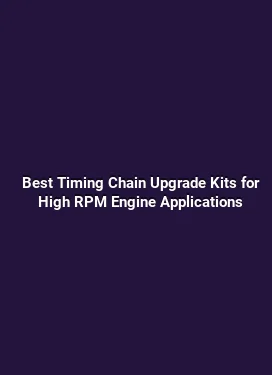Compression Ratio Calculator Guide for Turbo Engine Builds Complete
Turbocharged engines demand a nuanced approach to combustion dynamics, where compression ratio (CR) interacts with boost, fuel, ignition timing, and compatibility with modern engine management systems. A well-structured compression ratio calculator becomes a central tool in tuning workflows, enabling precise predictions, safe testing, and repeatable results. This guide dives into the practical use of a CR calculator within an engine tuning program, detailing how to interpret inputs, assess risk factors, and implement changes in a way that aligns with real-world performance goals.
Understanding Compression Ratio in Turbo Engine Builds

Compression ratio is a fundamental attribute of an internal combustion engine that represents the volume of the combustion chamber when the piston is at bottom dead center relative to when it is at top dead center. In naturally aspirated engines, CR directly influences the efficiency of the combustion process, thermal stress, and potential for detonation. When a turbocharger is introduced, the effective compression the piston experiences is a combination of the geometric compression and the pressurized air delivered by the turbo. This leads to two important considerations: the static CR and the effective CR under boost.
A CR calculator helps engineers model how changes to the static CR, boost pressure, intercooling effectiveness, and combustion chamber design will translate into pressure dynamics, air-fuel requirements, and timing needs. It also supports risk assessment for knock (auto-ignition) and detonation tendencies by evaluating the interplay between maximum cylinder pressure, intake air temperature, and fuel sensitivity across the rpm range.
Interpreting the Core Inputs: Geometry, Boost, and Fuel Strategy
Before diving into calculation, it is essential to map the core inputs that influence the calculator's output. The static compression ratio is a fixed property determined by piston height, head gasket thickness, and cylinder wall geometry. Boost pressure is the additional pressure introduced by the turbo system, typically measured relative to ambient pressure. Intake air temperature (IAT) and air density affect the mass of air entering the cylinder, which in turn impacts the required fuel amount for stoichiometric or target air-fuel ratios. A robust calculator also considers volumetric efficiency and residual exhaust gas fractions, which can shift effective compression in advanced models.
When tuning, the goal is to align the static CR with an appropriate boost strategy so that peak cylinder pressure remains within the design envelope of the engine’s components, including the head gasket, connecting rods, and piston rings. This alignment helps maintain efficiency while avoiding knock and excessive thermal load. A well-used CR calculator gives you a clear sense of how much headroom exists inside the engine’s thermal and mechanical limits under different operating conditions.
Measuring and Calculating Compression Ratio: Methods and Tools
There are several methods to estimate and verify compression ratio in turbo builds. A precise approach combines physical measurements with software-based modeling. In practice, you often start with the engine’s specifications to determine the static CR, then use a calculator to explore how boost modifies the effective compression and the ignition and fueling strategy required to sustain safe operation.
Key inputs include bore and stroke, piston dish or domed head geometry, combustion chamber volume, and gasket thickness. For turbo applications, you also input the target boost pressure, intercooler performance, and the anticipated air-fuel ratio. A robust calculator will deliver outputs such as effective compression under boost, estimated cylinder peak pressure, required octane rating, and recommended ignition timing windows. It also supports sensitivity analyses to understand how small changes in VE, IAT, or fuel pressure affect outcomes.
Tools and Techniques for Accurate CR Modeling

Modern engine management systems provide rich data streams that feed CR analysis. A common approach is to combine a physical measurement workflow with virtual modeling. Start by gathering the engine’s static CR data from the factory specification or measurements using a bore/stroke toolset and piston volume estimates. Then input the turbo’s boost curve, intercooling efficiency, and expected IAT at various loads. The calculator can then simulate effective CR across rpm bands, highlighting potential detonation risk at each stage of the power curve.
Another technique is to use a parameterized model that accounts for residual gas fraction and dynamic compression changes due to boosting. This model can help refine fuel and ignition maps and provide actionable guidance for ECU calibration, such as target timings and lean/rich transitions at specific boost levels. The outcome is a tuned strategy that respects mechanical limits while maximizing power and drivability across the operating range.
Impact on Engine Management Strategies
Compression ratio interacts with several facets of engine management, including boost control, fuel delivery, and ignition timing. The calculator’s insights inform a holistic tuning approach, ensuring that the ECU’s maps align with the engine’s real-world compression characteristics under boost. For performance-oriented turbo builds, straddling the line between efficiency and power requires careful calibration of the fuel sequence, knock resistance, and heat management strategies.
In practical terms, a higher effective CR under boost typically necessitates richer fueling, retarded ignition timing, or both to prevent knock. Conversely, with advanced cooling strategies and higher-octane fuels, it may be possible to push the effective CR higher without compromising reliability. The CR calculator helps structure these decisions by quantifying the trade-offs and delivering a data-backed blueprint for map adjustments.
Fuel Mapping and Ignition Timing Considerations
Fuel strategy in turbo builds must counterbalance the increased air mass and the higher pressure environment inside the cylinder. The calculator’s outputs guide fuel rail pressure adjustments, injector sizing considerations, and target lambda values across boost segments. Ignition timing needs to be adaptive; timing can be advanced during low-load, low-boost conditions to improve efficiency, while it must be retarded at high-boost regions to reduce detonation risk. The calculator helps predict at what MAP points timing adjustments yield the best balance between torque, throttle response, and safety margins.
Trend words and semantic cues such as knock margin, air density fluctuations, and turbo lag compensation enter the discussion as tuning concepts. By incorporating these ideas into the calculator’s framework, engineers can craft more resilient maps that respond consistently to changing operating conditions, including altitude changes and ambient temperature swings.
Practical Steps: From Data to a Tuned Map
Bringing a compression ratio calculator into a real-world workflow involves a sequence of disciplined steps. Begin with a baseline assessment of the engine’s existing hardware, including the turbocharger spec, intercooler efficiency, piston and ring integrity, gasket quality, and fueling system capability. Establish a target power band and drivability profile that aligns with the vehicle’s intended use. Then proceed through a structured calculation cycle that links geometry and boost to fueling and timing decisions.
Step-by-step workflow often looks like this: determine static CR from hardware, estimate effective CR under planned boost, define a safe knock threshold for the fuel grade and octane, map safe ignition timing windows across rpms and loads, and align fuel strategy to meet or exceed target lambda in boosted regions. Finally, validate with controlled dyno sessions or road tuning experiments, monitoring for any signs of detonation, unusual exhaust temperatures, or temperature-induced timing drift.
Example Scenario 1: Moderate Boost with Moderate Compression
Consider a four-cylinder engine with a widely used turbo setup, a static CR of 9.5:1, and a planned boost of 7 psi. The calculator models an effective CR in the boosted state around, say, 11.5:1 due to the pressurized intake. In this scenario, the tuning objective is to maintain near-stoichiometric fueling at peak boost while keeping ignition timing conservative enough to avoid knock at high IAT. The recommended approach is to use a rich-enrichment strategy at high-boost cells, ensure a robust intercooler, and enable a modest timing retard at low-end boost to smooth transitions. This setup emphasizes reliability and broad drivability with a reasonable power gain.
From a practical standpoint, you would monitor cylinder pressure traces, ensure the fuel system can deliver the required flow, and use the calculator to verify that the effective CR does not exceed the material limits of the piston and rings at the highest RPM. If detonation tendencies appear, you could consider a slight reduction in boost or a small decrease in effective CR by adjusting gasket thickness or selecting a slightly larger combustion chamber volume if feasible.
Example Scenario 2: Higher Compression, Advanced Cooling
In a high-performance build, a static CR of 9.0:1 is paired with aggressive intercooling and a turbo delivering 12 psi. The calculator indicates an effective CR near 14:1 under boost, which raises the risk profile for detonation unless fuel quality and timing are tightly controlled. The tuning approach might emphasize higher-octane fuel requirements, increased intercooling efficiency, and a more aggressive cooling strategy to manage intake air temperature. Ignition timing could be retarded progressively with boost to maintain a comfortable knock margin while still pursuing a strong torque curve.
In this scenario, the CR calculator supports making informed choices about injector sizing, rail pressure, and fuel pump capability. If the ECU supports knock protection and adaptive timing, the maps can respond dynamically to changes in boost and IAT, maintaining stable operation even as operating conditions shift with altitude or weather. The key is to establish a clear boundary for safe operation and use the calculator to stay within that boundary during iterations.
Common Pitfalls and Troubleshooting
Turbo tuning often encounters several recurring challenges. One is underestimating the impact of heat soak and IAT on air density and thus on the effective CR. Another is using an overly optimistic boost target without validating fuel supply and intercooling performance at the upper end of the RPM range. A third challenge is timing drift under load, which can masquerade as a CR issue if the measurement tools are not aligned with the real combustion environment.
To mitigate these risks, maintain a rigorous measurement protocol, validate the results with multiple data sources, and use the CR calculator as a hardware-aware planning tool rather than a single-source solution. Keep a close eye on detonation indicators, such as rising exhaust gas temperatures, abnormal knock control activity, and irregular engine sounds. A stepped approach—adjusting one variable at a time and recording its effects—helps isolate problems without destabilizing other subsystems.
Detonation Prevention and Heat Management
Detonation prevention hinges on managing heat and ensuring that the air charge remains within safe limits. This often means selecting fuels with sufficient octane, tuning the ignition timing to avoid spark knock, and maintaining effective cooling for the charge air. The CR calculator can help quantify the relationship between boost, CR, and detonation margin under specific operating conditions. In practice, engineers may implement a staged boost strategy that keeps high-CR operation confined to parts of the RPM range where timing can be safely managed and cooling is most effective.
In addition, monitoring exhaust gas temperature (EGT) trends and using data-driven adjustments to the fuel and ignition maps ensures stable operation even when environmental conditions shift. The calculator’s role is to provide a structured framework for predicting these outcomes rather than a simple, static guideline. The result is a tuning process that anticipates potential issues and provides a clear, testable path to resolution.
Future Trends: Semantics, Data, and Performance Insight
As engine management evolves, the integration of semantic models and data-driven optimization becomes more prevalent. Semantically rich data structures help correlate compression, boost, and fuel parameters with performance outcomes in ways that are easier to interpret and optimize. Lightweight modeling, real-time feedback, and cloud-based analytics can support rapid iteration while preserving safety margins. The ongoing adoption of advance cooling techniques, high-efficiency intercoolers, and refined piston designs expands the envelope of what is achievable with turbocharged powertrains without compromising reliability.
For practitioners, keeping an eye on the latest development in sensor technology, fuel quality monitoring, and predictive maintenance can translate into more accurate CR modeling and more resilient tuning. The ultimate aim is to align the physical realities of engine hardware with the software-driven tuning tools for a harmonious, high-performance result that’s repeatable across different vehicles and operating conditions.






